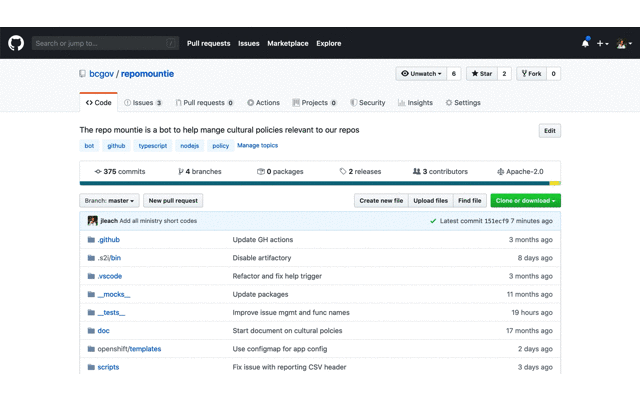wps-tileserver
Vector tile server for the Wildfire Predictive Services Unit
Overview
The intention of this project is to:
- provide tools to easily spin up a vector tile server in openshift, in a project agnostic manner.
- provide tools to manually pull data from an esri arc server into a postgis database.
- provide tools that periodically synchronize data from an esri arc server into postgis.
Components
- postgis database server. (it is assumed you have a working postgis database server)
- pg_tileserv - serves up vector tiles from postgis server.
- proxy server (varnish?) - caches responses.
- sync cronjob - updates database periodically.
Reference
https://blog.crunchydata.com/blog/production-postgis-vector-tiles-caching https://github.com/CrunchyData/pg_tileserv
Local development
Assumptions
- postgresql server with postgis running locally
Configure pg_tile server
Download the latest pg_tileserver, unzip and start.
mkdir pg_tileserv
cd pg_tileserv
wget https://postgisftw.s3.amazonaws.com/pg_tileserv_latest_linux.zip
unzip pg_tileserv
export DATABASE_URL=postgresql://tileserv:tileserv@localhost/tileserv
./pg_tileserv
Install binary requirements
Install gdal
Ubuntu
sudo apt install gdal-bin
Install python requirements
This step only required if you're going to be using the python scripts in this repo to load data. If you're loading directly from shapefiles, then skip this step.
Assumptions
- appropriate python version is install
- python poetry is installed
Install python requirements
poetry install
Loading data
Create a user and database for your tileserver
create user tileserv with password 'tileserv';
create database tileserv with owner tileserv;
\c tileserv
CREATE EXTENSION IF NOT EXISTS postgis;
Using an arcserver rest endpoint
Given some arcserver layer endpoint, e.g.: https://maps.gov.bc.ca/arcserver/rest/services/whse/bcgw_pub_whse_legal_admin_boundaries/MapServer/8
poetry run python fetch_feature_layer.py https://maps.gov.bc.ca/arcserver/rest/services/whse/bcgw_pub_whse_legal_admin_boundaries/MapServer/8
Using a shapefile
ogr2ogr -f "PostgreSQL" PG:"dbname=tileserv host=localhost user=tileserv password=tileserv" "my_shapefile.shp" -lco precision=NO -nln fire_area_thessian_polygons
Deploy
Assumptions
- You have the oc command line installed and you're logged in.
- You have docker installed locally.
- You have a postgres database in your target openshift environment that can be accessed by pg_tileserv (you made need to add additional rules to allow your tile server to communicate with your database.)
Instructions
Prepare your openshift environment
# we have docker limits, so pull the images local - then put them in openshift
# pull local
docker pull eeacms/varnish
docker pull pramsey/pg_tileserv
# tag for upload
docker tag eeacms/varnish image-registry.apps.silver.devops.gov.bc.ca/e1e498-tools/varnish:latest
docker tag pramsey/pg_tileserv image-registry.apps.silver.devops.gov.bc.ca/e1e498-tools/pg_tileserv:latest
# log in to openshift docker
docker login -u developer -p $(oc whoami -t) image-registry.apps.silver.devops.gov.bc.ca
# push it
docker push image-registry.apps.silver.devops.gov.bc.ca/e1e498-tools/varnish:latest
docker push image-registry.apps.silver.devops.gov.bc.ca/e1e498-tools/pg_tileserv:latest
Deploy pg_tilserver
# deploy pg_tileserv
oc -n e1e498-dev process -f tileserv.yaml | oc -n e1e498-dev apply -f -
Manually Loading data into your openshift hosted postgis database
The easiest way to achieve this, is to tunnel to your database server and then run the import scripts as if your database was local.
oc port-forward patroni-wps-mapserver-prototype-1 5432:5432

